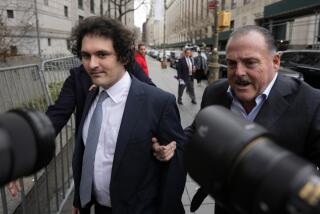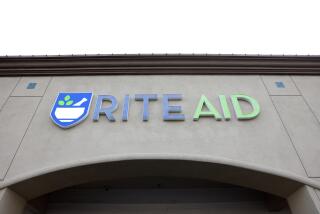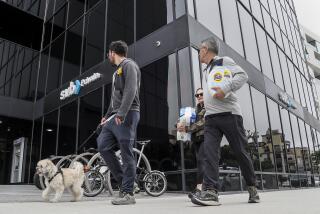Estimated Cost of S&L; Bailout Now Below $130 Billion
WASHINGTON — Treasury Secretary Nicholas F. Brady said Tuesday that lower interest rates and the improving economy have significantly reduced the expected cost of the savings and loan cleanup.
Brady predicted that the final toll could drop below $130 billion.
The Administration has long used a range of $130 billion to $160 billion for the cost of the bailout, but Brady’s statement reflected a new confidence among policy-makers that the final price tag will be less than even the low end of the estimate.
He urged the incoming Clinton Administration to press Congress “urgently” to vote for the additional funds needed to complete the disposal of hundreds of failed S&Ls.; The government has been holding on to insolvent institutions since April, unable to dispose of them because it lacks the money needed to cover the losses involved in their sale or shutdown.
“We moved swiftly and effectively to clean up perhaps the biggest financial calamity in the history of the country,” Brady told the Thrift Depositor Oversight Protection Board, which he chairs. “As we leave, the end is clearly in sight.”
He added: “I strongly urge the new Administration to take the final steps necessary to get this problem behind us once and for all.”
President-elect Clinton has made several critical references to the cost of the S&L; cleanup and its handling by the Bush Administration. But he has not indicated how he would change current policies.
The government has already spent $88 million, seizing 730 thrifts and selling or closing 653 of them, but Congress balked at voting in an election year to provide more money for the unpopular task of cleaning up failed savings institutions.
“It makes no sense to continue the stop and start process,” said Brady, calling on Congress to approve the funds needed to complete the task.
Albert V. Casey, chief executive of the Resolution Trust Corp., the agency handling the disposal of failed thrifts, was even more optimistic than Brady. He predicted that the bailout will end up costing $110 billion to $115 billion.
In an interview after the meeting, Casey disclosed that the RTC has spent $70 million checking records and preparing to sell the assets of Homefed Bank, the huge San Diego thrift seized by the government in July. The money was for “due diligence,” the complex process of checking loan files, records and liens before assets can be sold.
Homefed, with assets exceeding $13 billion, was the nation’s eighth-largest thrift; its failure was the biggest in S&L; history.
Casey, a Republican, would like to retain his position under the Democratic Administration, though he said he would step aside if Clinton asked him to leave.
“I would be cooperative to the nth degree,” said Casey, whose term extends until next October. “I’m not a poor loser or a sore loser.”
The RTC has 77 thrifts under its control and expects to take over another 40 to 80 troubled thrifts that have not yet failed.
If Congress approves the funds associated with closing or selling the institutions by mid-January, the RTC can complete the job before its authority expires on Sept. 30, Casey said.
Casey told the oversight board that the RTC attained its ambitious goals for fiscal 1992, which ended Sept. 30, by selling assets that failed thrifts had valued at $101 billion. The agency recovered $88 billion, or 87% of the book value of the assets.
“We are proud of this accomplishment,” Casey said.
More to Read
Get the L.A. Times Politics newsletter
Deeply reported insights into legislation, politics and policy from Sacramento, Washington and beyond. In your inbox three times per week.
You may occasionally receive promotional content from the Los Angeles Times.










